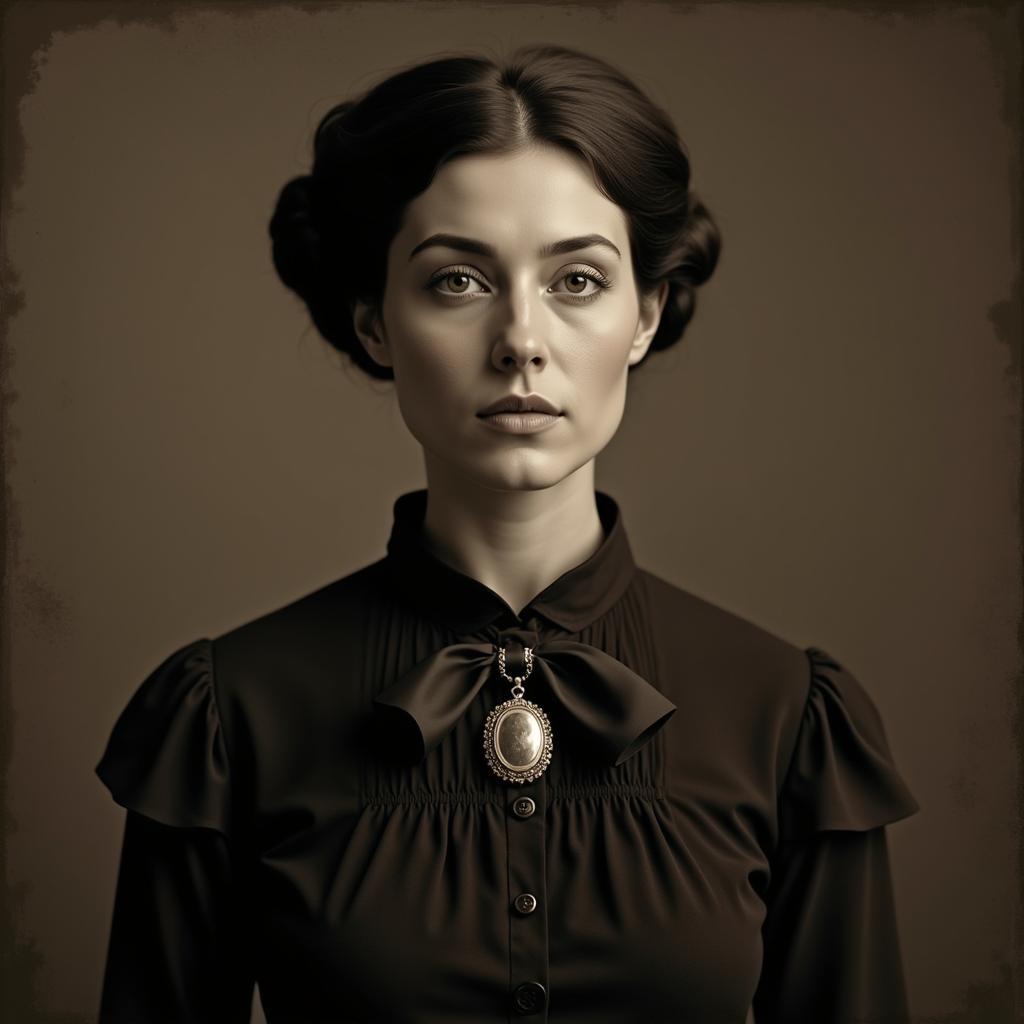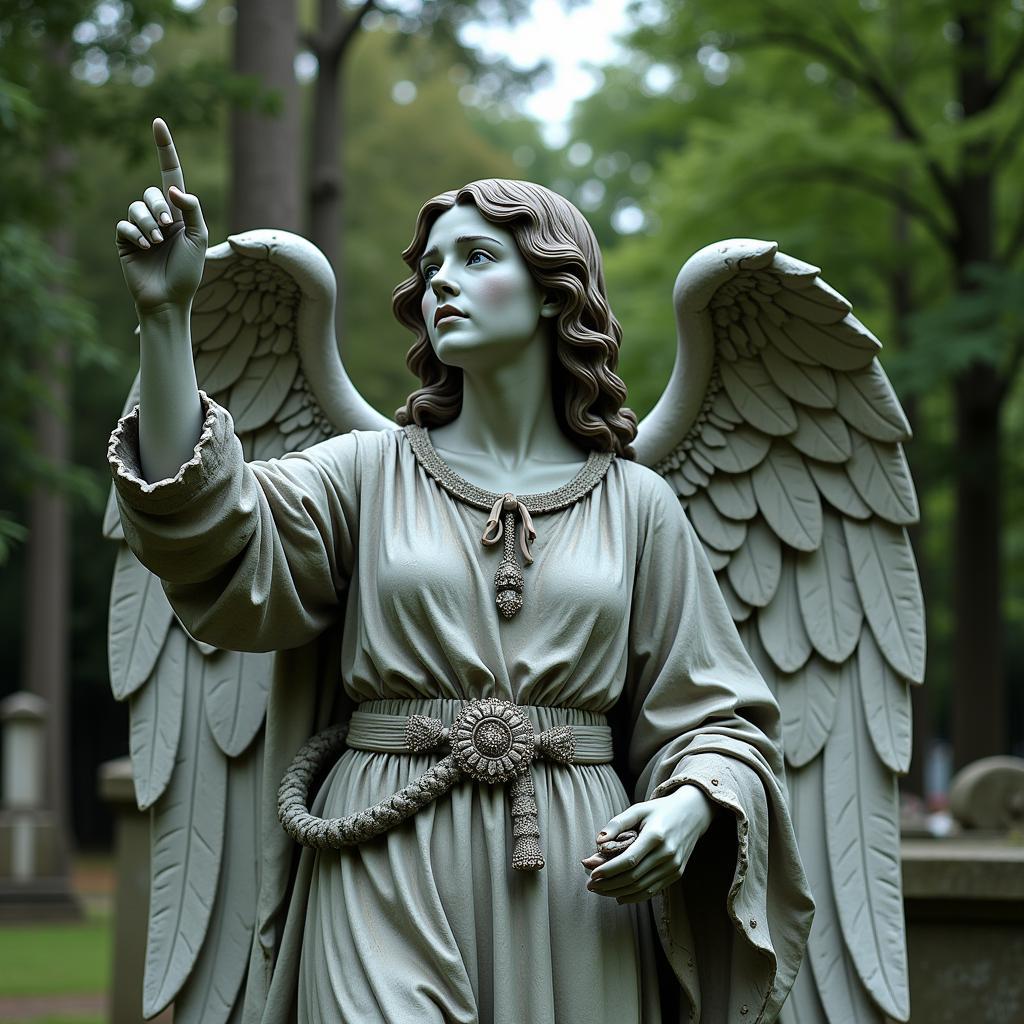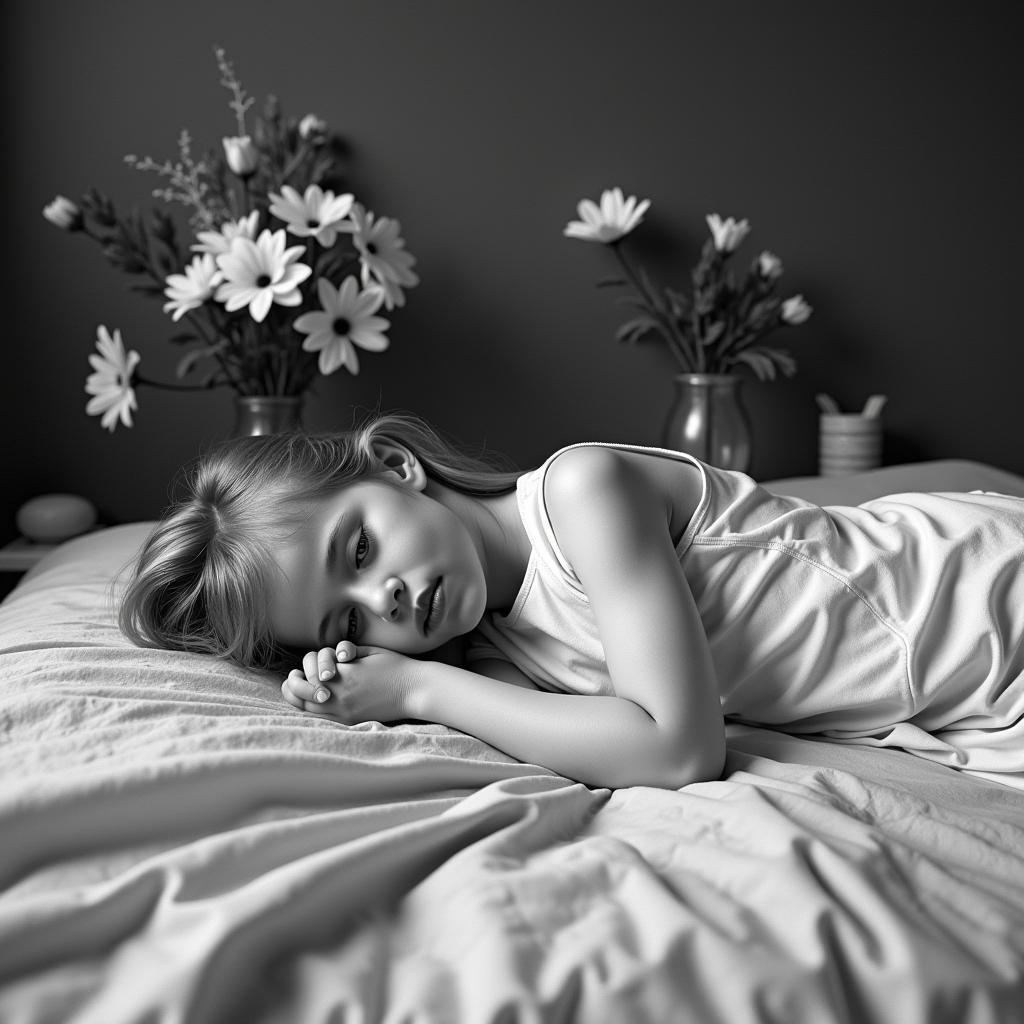Victorian Mourning Art provides a fascinating window into the complex relationship between life, death, and remembrance during the 19th century. This period, heavily influenced by Queen Victoria’s extended mourning for Prince Albert, saw an elaborate culture develop around death and the grieving process. More than just somber paintings, Victorian mourning art encompassed a diverse range of mediums, each infused with symbolism and sentimentality.
 Victorian Mourning Portrait of a Woman in Black
Victorian Mourning Portrait of a Woman in Black
Symbols of Loss and Remembrance
Victorian mourning art was deeply symbolic, with motifs representing the fleeting nature of life and the hope of an afterlife. Wilted flowers, weeping willows, and extinguished candles signified mortality and the passage of time. In contrast, images of butterflies, angels, and clasped hands suggested the soul’s journey and the possibility of reunion after death.
 Victorian Cemetery Sculpture of an Angel
Victorian Cemetery Sculpture of an Angel
One of the most evocative aspects of Victorian mourning art is the use of hairwork. This intricate art form involved incorporating a deceased loved one’s hair into jewelry, wreaths, or even elaborate pictures. Hairwork served as a tangible reminder of the deceased and a testament to the depth of the mourner’s grief.
Photography and the Postmortem Portrait
The advent of photography in the Victorian era had a profound impact on mourning practices. Postmortem photography, though initially met with resistance, became increasingly common as a way to capture a final image of the deceased. These photographs, often featuring the deceased posed as if sleeping or surrounded by loved ones, served as cherished mementos and aided in the grieving process.
“Postmortem photography, while unsettling to modern sensibilities, offered Victorians a tangible connection to their deceased loved ones in an age before widespread personal photography,” notes Dr. Eleanor Ainsworth, a historian specializing in Victorian culture at the University of Cambridge. “These images were often incorporated into mourning albums and displayed prominently in homes as a way of keeping the memory of the deceased alive.”
 Victorian Postmortem Photograph of a Young Girl
Victorian Postmortem Photograph of a Young Girl
The Evolution of Mourning Practices
As the Victorian era progressed, mourning practices and artistic expressions of grief gradually evolved. While the elaborate customs of the early Victorian period waned, the underlying sentiments of loss and remembrance persisted. Mourning art continued to provide solace and comfort, albeit in more subdued forms.
Victorian mourning art serves as a poignant reminder of the universality of loss and the human need for remembrance. These artworks, imbued with symbolism and emotion, offer valuable insights into how Victorians navigated grief and found solace in art.